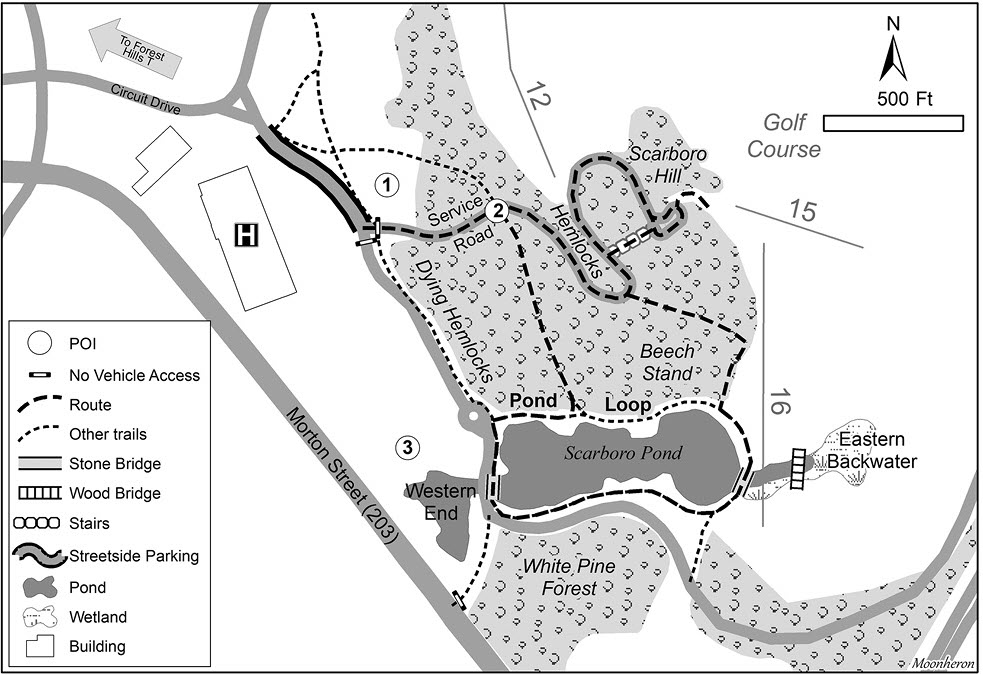Matt Sanda
Overview
 Franklin Park, comprising 527 acres, is the largest park in Boston’s Emerald Necklace. To bird the entire park and learn about the park’s history, read Bird Observer’s 1994 article “Franklin Park: Forgotten Gem of the Emerald Necklace” by Thomas Aversa. Aversa provides a high-level overview for birding the Franklin Park Zoo grounds, the Wilderness, Schoolmaster Hill, and Ellicottdale, in addition to Scarboro Pond.
Franklin Park, comprising 527 acres, is the largest park in Boston’s Emerald Necklace. To bird the entire park and learn about the park’s history, read Bird Observer’s 1994 article “Franklin Park: Forgotten Gem of the Emerald Necklace” by Thomas Aversa. Aversa provides a high-level overview for birding the Franklin Park Zoo grounds, the Wilderness, Schoolmaster Hill, and Ellicottdale, in addition to Scarboro Pond.
Scarboro Pond offers a high diversity of avian species in a concentrated area. This article updates species and provides a birding route to make the most of a morning at and around the pond. Start the route by walking from the tennis courts (1) up to Scarboro Hill to take advantage of the action on the eastern slope, then loop clockwise around the pond. Scarboro Pond is best birded just after sunrise before the golf course gets busy and disrupts several prime birding locations. Because the area has heavy foot traffic from golfers, dogwalkers, and people exercising, a bird seen early in the morning may be hiding or gone by late morning. Most trails are paved and accessible. A few hours spent here can lead to great rewards if you know where to look, especially in spring and fall.
Ambitious birders who want to spend a day exploring more of Franklin Park’s drumlins and glacial cuts should prepare for an endurance event. Other notable birding locations in the park beyond Scarboro Pond include the oak-pine savanna outcroppings and the shady slopes of the Wilderness to the west, the Bear Dens in the northmost section of the park, and the area around Ellicott Stream, which flows from Ellicott Arch down to Forest Hills Street, where it disappears into the city’s stormwater system.

Map of Scarboro Pond and the Greater Franklin Park Area
To view the rest of the article you'll need to
subscribe. Bird Observer publishes original articles on birding locations, on avian populations and natural history, on regional rarities, field notes, field records, photographs, and art work.